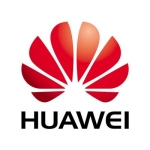What is our primary use case?
Our primary use case is data storage, compression, encryption, all in one device. So we need all those things.
How has it helped my organization?
We're consolidating two to three arrays down to one which means that our data center footprint has decreased by like 90%. So we're saving 90% of our space, and it also is much better on power and everything else in our data center. And on top of that, the performance is much, much better than our older arrays.
What is most valuable?
The most valuable feature is the performance and compression. The most useful tool is CloudIQ.
What do I think about the stability of the solution?
Stability of the new PowerMax from what I've found is a lot better than the older version of the VMAX or EMC Dell array. That's one of the reasons why we've purchased more of them going forward. I think it's going to be a pretty prevalent storage array in our environment.
All of our applications are running on mission-critical applications. We've always been a Dell EMC shop, we've always run all our critical applications on there, and this is just a better and more improved product, so we're just continuing with the cycle that we've had for 20 years.
What do I think about the scalability of the solution?
It's very scalable. It can grow much larger than I probably would utilize, but I don't like to put all my data in one box. The scalability is enormous in the PowerMax.
How are customer service and technical support?
We haven't had to use tech support customer service. We've had a couple of little things come up, but for the most part, they've been pretty stable, so we haven't had any issues.
Which solution did I use previously and why did I switch?
We don't have a vast I/O performance database or application suite, so the old arrays were taking care of that part. But we see the milliseconds to microseconds response time in the new variety.
We have purchased some professional services to do NDM migrations. We haven't done any yet, but we will be doing that in the next quarter. From everything I've seen and looked at, and I'm going to take a few more sessions on it. I think it's going to be much easier to migrate data from the old to the new.
We knew we needed to invest in a new solution based on a compression standpoint and the overall cost by reducing our footprint and fitting more data into a single file, it just made sense, and it's been working great for us so far. And MVME had a considerable influence on my decision to go with PowerMax as well the ability to encrypt and compress at the same time.
How was the initial setup?
The initial setup was straightforward. From a hardware stand-up getting ready to go perspective, it was very straightforward. Our internal processes held it up. It wasn't anything that Dell held it up with. It went well.
The new Unisphere for PowerMax is beneficial in collecting that data although I have not started using the app IQ or, I don't remember what it's called. The alerting, they gather all the data, and I can use my phone and look at an app, and it can tell me right there that my environment is good that day or whatever and it sends me alerts. So, I haven't started using that, but I plan to when I get back, so it just makes the management a little bit easier looking at the whole environment.
What about the implementation team?
No, we didn't implement through a vendor we go direct through Dell. And the experience was excellent. We have a great relationship with our Dell sales team as well as their support and customer service organization.
What was our ROI?
Our ROI on this is much higher than it was previously with the arrays that we had. Being able to consolidate three arrays into a single footprint has made it much easier and cost-efficient.
What's my experience with pricing, setup cost, and licensing?
From a TCO perspective, we saved a lot of money by getting the over rate consolidating two into one or three into one, so we saved a ton of money on the total cost of ownership over the next four years.
Which other solutions did I evaluate?
We have multiple solutions, but we're mostly an HDS F-Series company as well as Dell EMC.
What other advice do I have?
From what I've heard people seem to think that the cost of the array is prohibitive. And I would tell them to look at the ROI and do their cost analysis on it because from what I've found, cost per gigabyte is much lower than what it was for previous arrays as well as the overall cost of ownership in the reduction of the footprint in the data center is enormous.
On a scale from one to ten, one being the worst and ten being the best, I would rate the product an eight or nine. So far it's been great.
Disclosure: My company does not have a business relationship with this vendor other than being a customer.











